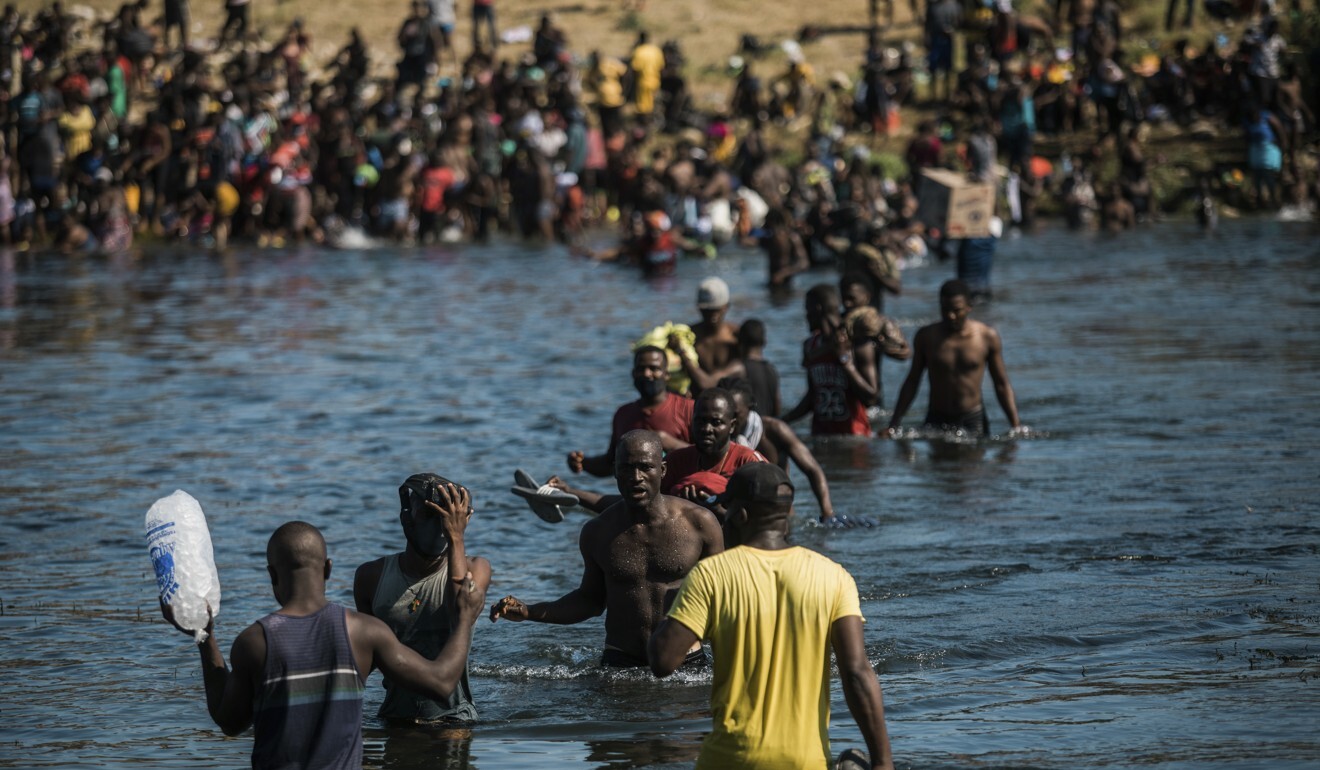
US launches mass expulsion of Haitian migrants from Texas, likely biggest in decades
- US removing migrants from Texas border camp, begins flights to Haiti
- Camp under Texas bridge attracted more than 12,000 migrants
The US flew Haitians camped in a Texas border town back to their homeland on Sunday and tried blocking others from crossing the border from Mexico in a massive show of force that signalled the beginning of what could be one of America’s swiftest, large-scale expulsions of migrants or refugees in decades.
The only obvious parallel for such an expulsion without an opportunity to seek asylum was in 1992 when the Coast Guard intercepted Haitian refugees at sea, said Yael Schacher, senior US advocate at Refugees International whose doctoral studies focused on the history of US asylum law.
Similarly large numbers of Mexicans have been sent home during peak years of immigration but over land and not so suddenly.
Central Americans have also crossed the border in comparable numbers without being subject to mass expulsion, although Mexico has agreed to accept them from the US under pandemic-related authority in effect since March 2020. Mexico does not accept expelled Haitians or people of other nationalities outside Mexico, Guatemala, Honduras and El Salvador.

When the border was closed Sunday, the migrants initially found other ways to cross nearby until they were confronted by federal and state law enforcement. Haitian immigrants crossed the river into the US about 2.4km east of the previous spot, but they were eventually stopped by Border Patrol agents on horseback and Texas law enforcement officials.
Biden’s immigration plan unveiled, offering 11 million a path to US citizenship
As they crossed, some Haitians carried boxes on their heads filled with food. Some removed their pants before getting into the river and carried them. Others were unconcerned about getting wet.
Agents yelled at the migrants who were crossing in the waist-deep river to get out of the water. The several hundred who had successfully crossed and were sitting along the river bank on the US side were ordered to the Del Rio camp. “Go now,” agents yelled. Mexican authorities in an airboat told others trying to cross to go back into Mexico.

Mexico said Sunday it would also begin deporting Haitians to their homeland. A government official said the flights would be from towns near the US border and the border with Guatemala, where the largest group remains.
Haiti’s agony: earthquake, storm and floods
Some of the migrants at the Del Rio camp said the recent devastating earthquake in Haiti and the assassination of President Jovenel Moise make them afraid to return to a country that seems more unstable than when they left.
“In Haiti, there is no security,” said Fabricio Jean, a 38-year-old Haitian who arrived in Texas with his wife and two daughters. “The country is in a political crisis.”
Since Friday, 3,300 migrants have already been removed from the Del Rio camp to planes or detention centres, Border Patrol Chief Raul L. Ortiz said on Sunday. He expected to have 3,000 of the approximately 12,600 remaining migrants moved within a day, and aimed for the rest to be gone within the week.

“We are working around the clock to expeditiously move migrants out of the heat, elements and from underneath this bridge to our processing facilities in order to quickly process and remove individuals from the United States consistent with our laws and our policies,” Ortiz said at news conference at the Del Rio bridge. The Texas city of about 35,000 people sits roughly 230km (145 miles) west of San Antonio.
Some migrants said they were planning to leave Haiti again as soon as possible. Valeria Ternission, 29, said she and her husband want to travel with their 4-year-old son back to Chile, where she worked as a bakery’s cashier.
“I am truly worried, especially for the child,” she said. “I can’t do anything here.”

